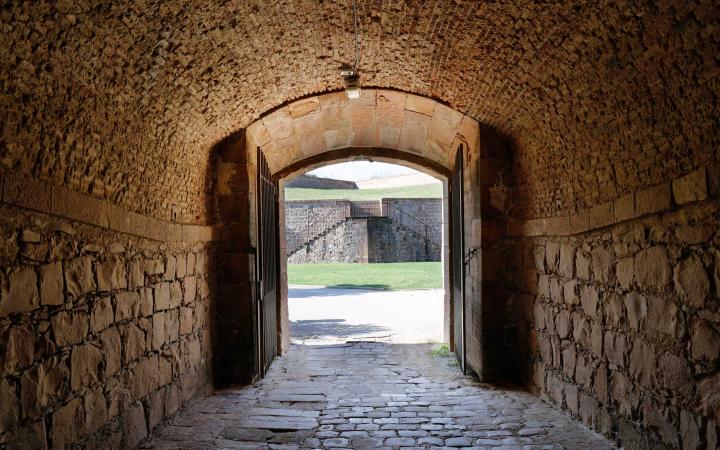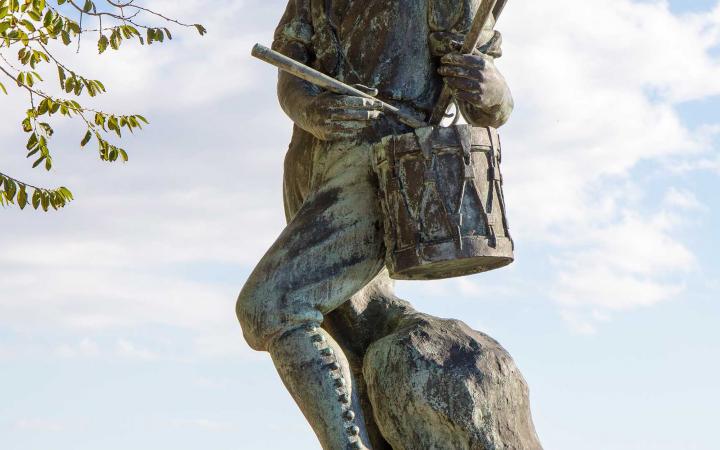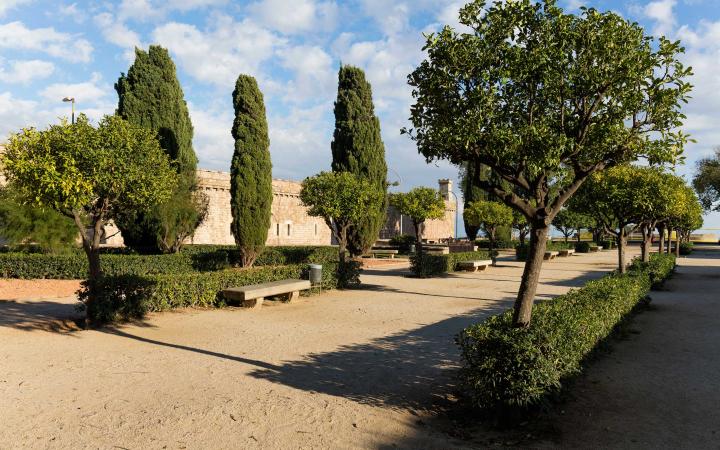The glacis is the inclined embankment at the base of the curtain wall between the Velasco and Llengua de Serp Bastions and continues as far as the wall that delimits the covered way on the hornwork. The function of the glacis was to keep potential assailants in direct line of sight so that the defenders could easily counterattack from the covered way. The covered way is a perimeter corridor that separates the glacis from the moat and has the same constructive characteristics as the exterior covered way. Its purpose was to defend the former and prevent the entry of enemy troops into the latter.
The ravelin is the main part of the hornwork and is located centrally in the moat. It consists of a triangular structure formed by a perimeter wall and a flat area on top, which is reached by a ladder. The ravelin was an advanced defensive fortification that protected the covered way and the surrounding moat against potential assailants. This moat in this area is known as the Santa Elena moat. It is eight metres deep and situated between the Velasco bastion and the sea-facing wall. It is reached by means of a passageway in the centre of the wall that links the two demi-bastions delimiting it at either end of the inner ward. The aim of this moat was to prevent besiegers who had occupied the outer moat from mounting an attacking from the rear on the defenders on the covered way of the hornwork
The demi-bastions forming part of this set of defences in the outer ward are two half bastions united by a wall formed by the outer wall of the first enclosure and delimited by the Santa Elena Moat. Another wall connects them to the Santa Amàlia and Sant Carles Bastions.
The hornwork, with all its component parts, was fruit of the programme of improvements planned by Cermeño in 1751. Beforehand, the castle did not have any structures physically separating the inner and outer wards because its occupants had relied on the elevated position of the fortress as a means of defence. During the period when the castle served as a military fortress, the hornwork always had the same purpose, which was eminently defensive. There are documents that report the start of the construction of a gunpowder magazine around 1867, and later an artillery magazine.
With the outbreak of the Spanish Civil War (1936-1939) an anti-aircraft battery was installed on the demi-bastion on the seaward side, which is still in place, while the Santa Elena Moat became the place of execution of supporters of the military uprising. Not long after the end of war and the occupation of the castle by the Francoist side, a memorial was built to commemorate the execution of these prisoners from the nationalist faction, inaugurated on 26 January 1940. It still exists today. In 1970, a monolith expressing gratitude to Franco for the cession of the castle to the city was installed in the centre of the ravelin.
And towards the end of the 1940s a rectangular building intended for billeting officers was built at the western end of the demi-bastion in the hornwork. This now houses the offices of the castle staff.
With the alterations to the inner ward in 1960 the sheds on the demi-bastion were demolished. The surface was landscaped with flowerbeds and benches, and a statue of the Timbaler del Bruc (the Drummer of El Bruc) was erected, still in place today. There is now a garden of orange trees.












